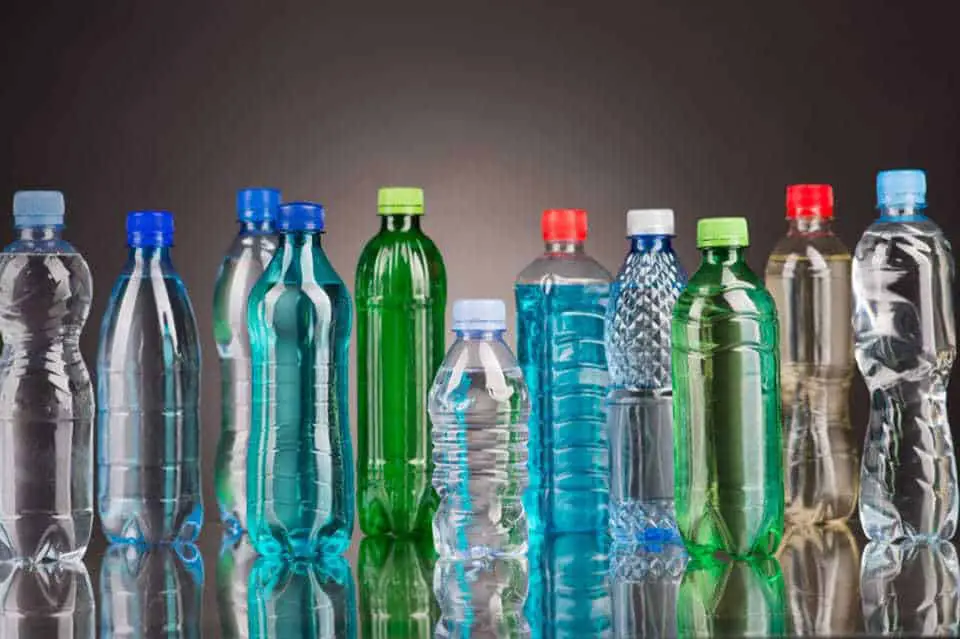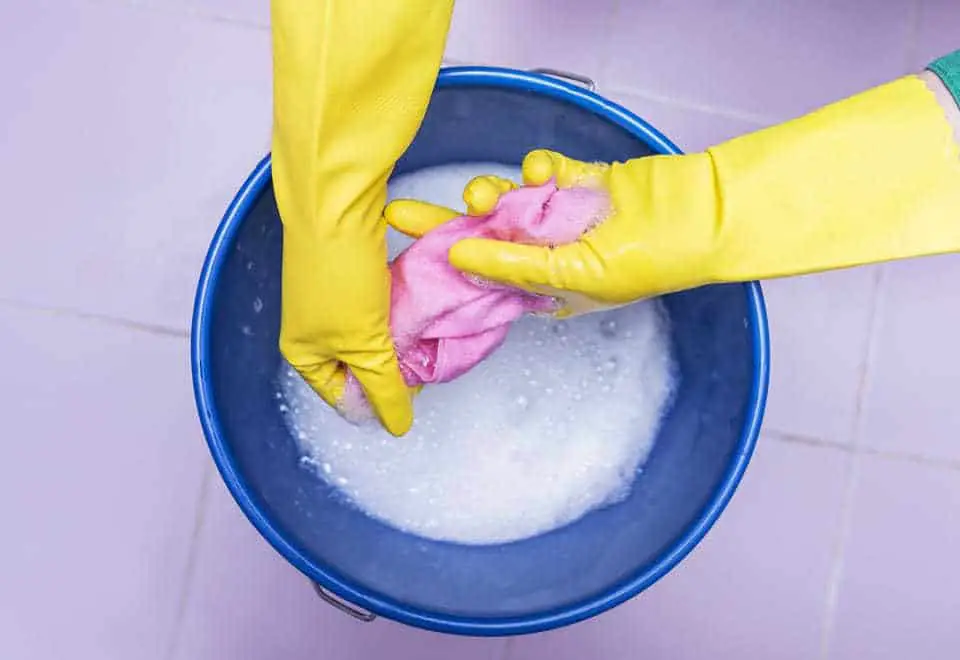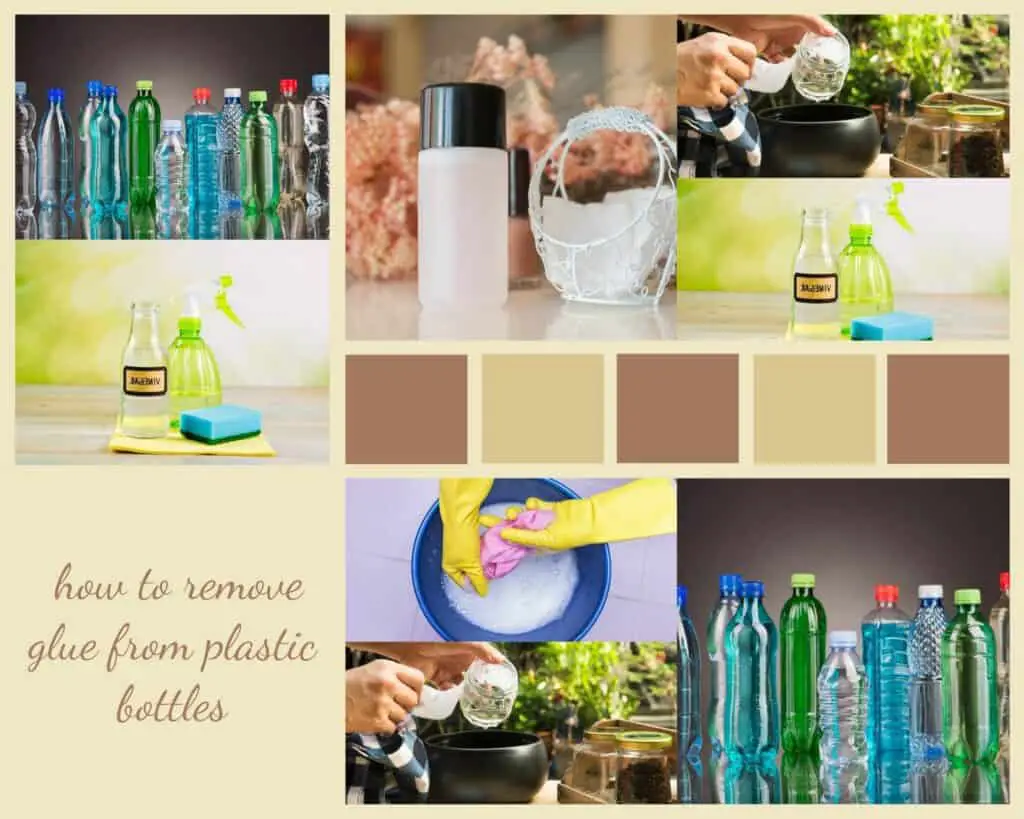
Reusing plastic bottles is a great way to save the environment, but the process can sometimes be frustrating. The step of removing stickers and stubborn glue on the surface is the leading cause. Many people had to throw away plastic bottles because they could not remove the sticky residue.
If you are also suffering from the above problem, we can help. This article will detail how to remove adhesive from plastic bottles. The steps include:
- Moisten the rag.
- Place the rag over the glued area for softening.
- Wipe off the adhesive layer.
- Scrape off residue.
- Clean up the area.
To learn more step-by-step details, read on with Glue Care!
Things You’ll Need

Removing glue stains and adhesive residues can be an annoying hassle, but there are ways to deal with it.
Please prepare the supporting tools that we list below. They will make your project a lot easier.
- A clean rag.
- Acetone, nail polish remover, rubbing alcohol, or vodka.
- Plastic cards or semi-hard objects such as tongue depressors.
- Protective gloves.
- A sponge.
You need to rely on the help of solvents to get the job done most efficiently. Nail polish remover is the perfect chemical to remove dirt and restore the entire surface of your plastic bottles.
You should be aware that acetone is very toxic and can be corrosive to the skin.
Therefore, you need to wear protective gloves when handling it. The working environment also needs to be well ventilated. Keep windows wide open to prevent accidents.
Sharp objects can hurt the plastic. Do not use sharp edge equipment such as razors or putty knives with this project.
How To Remove Glue From Plastic Bottles?
Once you have your tools ready, let’s study how to remove glue from plastic containers. Specific steps include:
Moistening The Cloth Rag
As a first step, you need to take a rag and soak it in a solution of acetone or nail polish remover. If the glue area is not too large, you can replace it with a cotton swab or cotton ball to make it easier to handle.
Since this type of solvent is quite corrosive, you should not let it get on your skin. Wear gloves or limit exposure by using tools.
Placing The Rag Over The Glued Area To Soften It
Place a damp cloth over the glued area. You can rub it clockwise or counterclockwise to make the solution penetrate the glue faster. Once you’ve covered the entire surface, coat your patch with a towel.
Wait for 15 to 30 minutes. The chemicals in the solvent and water will soften and remove the glue layer gradually.
The longer you let the towel cover the area, the softer the glue will be and the easier it will be to peel off.
For the most accurate timekeeping, ask for the help of a stopwatch or smartphone.

Wiping Off The Adhesive Layer
Once the glue has softened and softened, you can easily rub it off the surface of the plastic bottle.
Use the sponge in your kitchen. Select the side with higher abrasiveness and roughness to use. Another possible choice is a scouring pad.
Rub the tool vigorously on the surface to gradually remove the glue. It would help if you were careful not to scratch or damage the plastic surface.
If the adhesive still does not come off, cover with a solvent-soaked cloth until the bond comes off more.
Scraping Off Adhesive Residue
When most of the glue has been removed, you will quickly notice some residual residue. Use a scraper with a non-hard edge like a credit card or plastic scraper. Avoid using metal or glass blades with sharp edges as they can easily damage the plastic.
When you are scraping underneath the glue to remove, be careful not to scratch the plastic surface.
Cleaning Up The Area

After we have finished removing adhesive residue, we come to the final step. This step includes cleaning and refurbishing your plastic bottles.
Use a damp cloth soaked in a mixture of warm water and dishwashing liquid to clean the area. The smell of soap will remove the unpleasant scent of the solvent and remove the grease during the cleaning process.
After you have thoroughly cleaned, use a clean towel to dry the surface. Dry the plastic bottles naturally in the air.
Frequently Asked Questions
This section answers your questions about how to get glue off of plastic bottles.
What Will Dissolve The Adhesive On Elastic Containers?
Although acetone is an effective solvent for adhesive removal, it can sometimes discolor products. You will need to consider testing the surface.
If this type of solvent is not the best choice for you, we have a few other suggestions.
Label Removal Products
Plastic residue on elastic containers usually has an excellent and persistent grip. Homemade recipes don’t necessarily beat them. It is when you need the support of specialized chemicals.
All you need to do is apply the solution to the adhesive area with a towel or rag. Let it rest for 15 minutes. Then, peel off the label and use a scraper to clean the surface.
Don’t forget to wash containers with soap before using them again.
White Vinegar
Use a basin large enough to hold your jars. Pour in white vinegar so that the amount of water is just sufficient to cover the entire face of the label.
You need to soak for at least 15 minutes. A little trick to make the glue softer and easier to peel off is to use the microwave to spin.
During dismantling, if you encounter any difficulties, ask for the help of a razor or sponge. It will remove any glue residue on the surface.
Hair Dryer
Using high heat can also dry out the adhesive. Please turn on the hairdryer and dry the space back and forth for 30 seconds. You may see the label peel off slowly.
If they are still too sticky, continue drying for another 30 seconds. However, be careful because heat can deform your elastic bottles very quickly.
Oily Food
Oil is an excellent material for making adhesives soft and easy to come off. You can use a variety of oils.
Use vegetable oil if you don’t have a lot of budgets. Coconut oil is more suitable for the glue layer because it has more fat.
For those who want a scent for their cleaning mix, add a few drops of essential oil to your cooking oil mixture.
Soak containers with glue in oil. An easier option is to use a spray bottle. Make sure the oil is evenly coated on the surface and let it sit for 12 to 24 hours. Then you can peel off the glue quickly.
If you don’t want to use oil, experiment with peanut butter and mayonnaise.
To learn more fun ways, watch the video below.
Can You Use Water To Dissolve Adhesive From Elastic Containers?
Yes, you can. You can soak the jar in hot water to soften the glue. However, be careful as heat can deform your product.
To learn more fun ways, watch the video below.
Final Thoughts
Cleaning and polishing elastic bottles will help encourage people to reuse them. In the long run, it will reduce the amount of industrial waste on the outside and keep the environment clean.
If you are using such products, consider recycling them. You can also use them in craft projects. There are lots of exciting ideas.
Thank you for reading!
Related article:
- How To Glue Foam Board To Wood For The Best Result
- How to Remove Gorilla Glue From Wood: 4 Easy Steps

